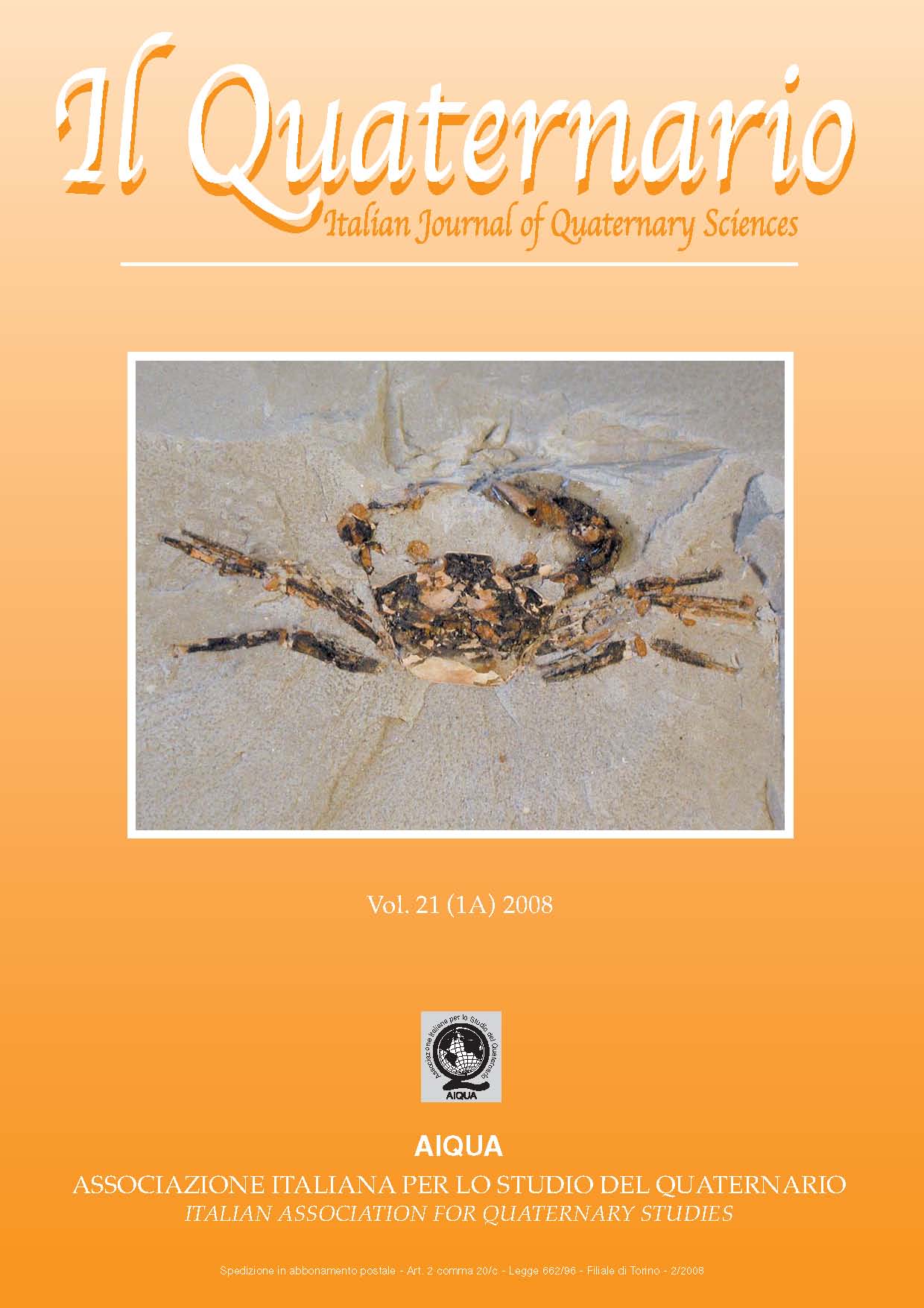LO STUDIO DELLA SEZIONE “IL FRONTE” PER LA DEFINIZIONE DEL PIANO TARENTIANO (PUGLIA, ITALY)
Main Article Content
Abstract
F. Antonioli, A. Deino, L. Ferranti, J. Keller, S. Marabini, G. Mastronuzzi, A. Negri, A. Piva, G.B.Vai & L. Vigliotti , The study
of “Il Fronte” Section to define the Tarentian Stage (Puglia, Italy).
The Italian Commission on Stratigraphy of the SGI is seeking for a marine section suitable for defining the Upper Pleistocene GSSP.
This Series has been usually identified with the Tyrrhenian Stage which in the wake of formalization received different meaning from
stratigraphers and geomorphologits. Hence, the proposal of a new Upper Pleistocene Stage name and type area, the Tarentian, created in 1994. Criteria for defining the Tarentian Stage and selecting its GSSP can be the beginning of MIS 5 (~ 134 ka) and the beginning of MIS 1 (~ 10 ka) taken for the base of the Holocene. The Tarentian Stage also contains MIS 5.5 highstand with its peak at ~ 125 ka. Upper Pleistocene marine deposits of thickness exceeding 1 to 2 m are rarely exposed on land except for some Mediterranean
countries. Italian coastal areas keep some hundreds of marine Upper Pleistocene sites. They are some characterized by the Strombus
bubonius Senegalese tropical fauna. They are found at different elevations from -130 to +170 m depending on the strong differential
crustal mobility of the area. The best up to some 10 m thick Upper Pleistocene marine sections are exposed at the coast of the Gulf of
Taranto facing the Ionian Sea. Here the regional uplift is less intense than at the Apulian Apennine front where it postdates MIS 15.
Thus, there is a greater chance of finding part of the Tarentian Stage deposited in marine conditions. First results from the "Il Fronte"
section in a km-long coastal cliff show from the base made by the Plio-Pleistocene Blue Clay Fm.: (1) ~ 4 m thick massive to silty grey
marine clay rich in planktic forams suggesting temperature fluctuations in a slope environment. The interval has normal magnetic polarity and the nanno plankton suggests a Middle Pleistocene age possibly in the range of 0,577 Ma (LO G. omega) to 0,430 Ma (LO P.
lacunosa). (2) The top of this clay is marked by a two cm-thick white glass-rich high-potassic distal tephra horizon followed by a well
laminated 20 cm-thick sapropel. Shortly before the tephra, the forams indicate decreasing bottom oxygenation. (3) ~ 1.5 m of greygreen normal marine outer shelf mudstone passing upward to inner mudstone shelf. It is gradually succeeded by the over two m-thick subtidal Strombus calcarenite yielding a 126 ka TIMs date. The rapid shallowing between (2) and (3) may suggest an omission gap.
However, normal marine mudstone at least 1.5 m-thick underlies the shallow-water calcarenite which represents MIS 5.5. Within this
continuous mudstone interval beneath the calcarenite the Upper Pleistocene GSSP can be properly placed, and easily correlated with
the continuous deep cores of the Ionian Sea and the oceans.
Article Details
Section

This work is licensed under a Creative Commons Attribution-NonCommercial-NoDerivatives 4.0 International License.
The Author grants usage rights to others using an open license (Creative Commons or equivalent) allowing for immediate free access to the work and permitting any user to read, download, copy, distribute, print, search, or link to the full texts of articles, crawl them for indexing, pass them as data to software, or use them for any other lawful purpose.

